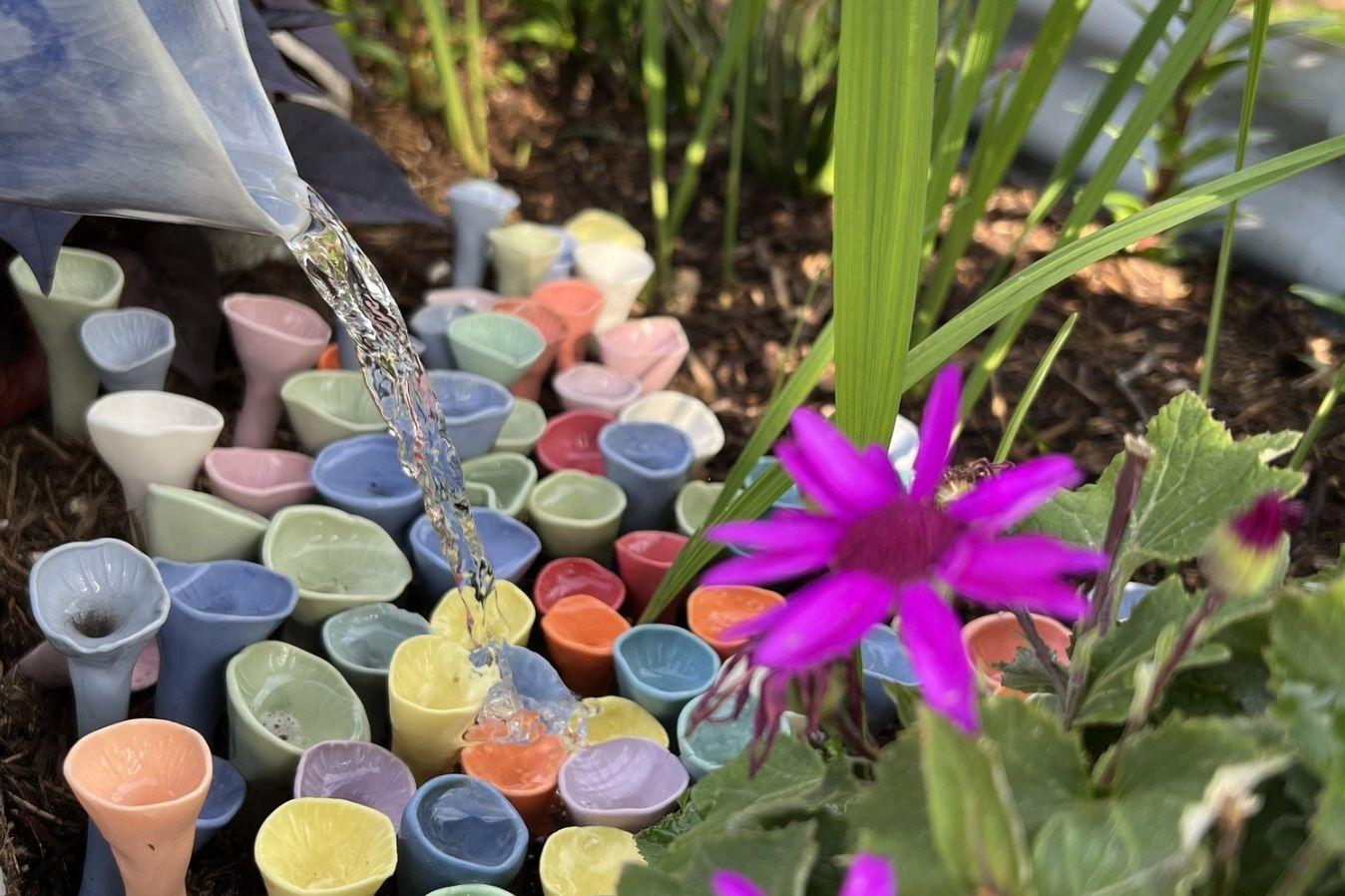With National Pollinator Week in full swing, gardeners everywhere are embracing new ways to support these vital creatures. The buzzy week is an annual celebration raising awareness about the critical role pollinators like bees, butterflies, hummingbirds, and other insects play in our ecosystems, and the urgent need to protect them.
Pollinators are essential for the reproduction of more than 75% of the world’s flowering plants and nearly 35% of global food crops. To help these hard workers out, eco-conscious gardeners are turning to simple, effective solutions, like pollinator pots and bowls. Here's what to know about pollinator pots and how you can use them in your own garden.
Mary Phillips is the head of Native Plant Habitat Impact & Certifications at the National Wildlife Federation.
What Are Pollinator Pots?
Pollinator pots are small containers designed to provide an easy source of nourishment for pollinators. Rather than growing plants, these pots are shaped to mimic flowers, but instead offer hydration to bees, hummingbirds, and other pollinators.
The pollinator pot trend has exploded on TikTok, where creators share creative and budget-friendly ways to craft these helpful feeders. And these videos are inspiring viewers to repurpose materials and common containers and create accessible, attractive feeding stations.
This approach is especially popular among urban gardeners or anyone with limited space, as it allows them to support pollinators from balconies, patios, or windowsills without needing a full garden.
Skip the Sugar Water
"Pollinator cups, along with butterfly puddlers, can be a supplemental decorative water source in small space gardens, especially where space is limited, like a balcony or patio," says Mary Phillips, the head of Native Plant Habitat Impact & Certifications at the National Wildlife Federation.
While many TikTokers recommend a sugar water mixture, it’s best to just add water to the pots. Though well-intentioned, sugar water can attract unwanted pests like ants, wasps, and even rodents. Instead, focus on planting nectar-rich flowers and herbs that naturally draw pollinators without inviting extra trouble. The goal is to create a healthy, low-maintenance environment where pollinators can thrive, no added sugar needed.
"We do not recommend sugar solutions in these cups as they can attract yellow jackets and other unwanted pests," Phillips says.
Related
Bee Cups: A Pollination Innovation
Among the innovations gaining attention are Bee Cups: Handmade mini porcelain containers that hold a teaspoon of water for pollinators. These adorable cups come in a variety of cute pastels, from baby pinks to buttery yellows. And they're glazed in a way that's designed to attract more pollinators.
According to the site, bees see ultraviolet colors, not red. Flowers use ultraviolet colors and bullseye patterns to attract pollinators, so Bee Cups invented UV-reactive glazes to make the cups look like flowers to bees. Humans can only see the glowing hues if we use a blacklight.
And customers find them really easy to implement into a garden.
"The bees in my beehive love them," said one review on the Bee Cups website. "They are able to get a drink, gather pollen nectar, and head straight back. I put one set close to the hive and one with pots. Hope to buy more."
How to Create Your Own Pollinator Pots
Choose the right container: Select small pots or bowls that can safely hold water without tipping over. Recycled or biodegradable materials work well and keep waste low.
Placement: Set your pollinator pots in sunny spots sheltered from heavy winds. Keep them visible from windows or patios so you can enjoy watching your pollinator visitors, too.
Maintenance: Refresh the water and clean the containers regularly to keep them safe and inviting.
Pollinators Matter
As National Pollinator Week continues, embracing trends like pollinator pots, promoted by TikTok creators and supported by organizations like Bee Cups, offers an easy and meaningful way to help these crucial creatures thrive.
Whether you’re a seasoned gardener or a beginner, these mini habitats can make a big difference for pollinators and the planet.



